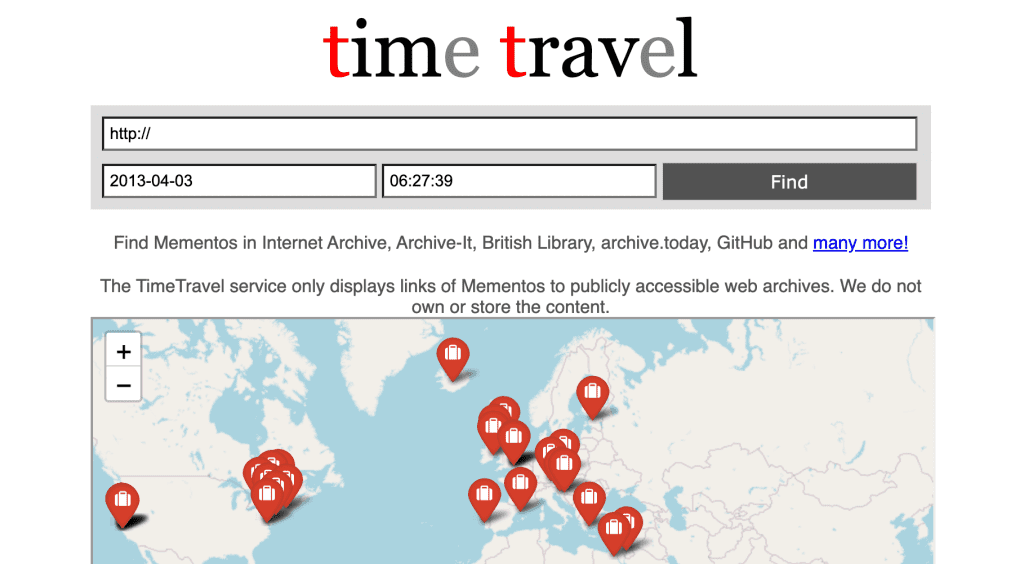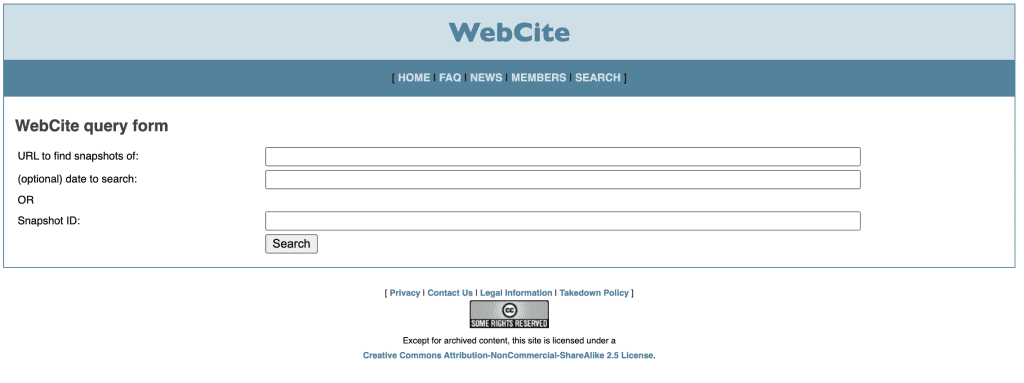
Exploring the Past Online: 5 Alternatives to the Wayback Machine to See Sites as They Were
In the ever-evolving digital landscape, preserving the history of the internet is crucial for understanding its transformation and impact over time. The Wayback Machine has long been the cornerstone of web archiving, offering snapshots of websites across different epochs, thus serving as a digital time capsule. However, the realm of web archiving extends beyond this well-known tool, with several alternatives providing unique perspectives and functionalities.
Exploring the 5 Alternatives to the Wayback Machine delves into these options, offering a guide to the diverse tools available for archiving web history and data. Each alternative presents distinct features and capabilities, from capturing comprehensive snapshots of web pages to providing specific insights beneficial for SEO and research purposes.
What Is The Wayback Machine?
The Wayback Machine is a digital archive of the internet, created by the Internet Archive, a nonprofit organization. It allows users to go back in time and see what websites looked like on different dates, capturing snapshots of web pages as they have evolved over the years. This tool is incredibly useful for researching historical website content, seeing how trends have changed, and retrieving information that may have been removed or updated. Essentially, it serves as a time capsule for the internet, preserving digital history and making it accessible to anyone.
Apple.com back in 2004

This blog will navigate through the intricate world of web archiving, introducing tools that complement or even enhance the functionalities provided by the Wayback Machine. Whether you are a researcher, marketer, legal professional, or simply a curious explorer of the digital domain, understanding these tools can enrich your perspective on the internet’s vast and varied history. Let’s embark on this journey through the annals of the web, uncovering the treasures preserved in these digital archives.
Overview of Memento

The Memento Project serves as a unique web archiving tool, distinguished by its ability to amalgamate records from various sources, including the renowned Wayback Machine. It stands as a comprehensive platform for accessing historical snapshots of web pages, offering a panoramic view of the internet’s evolution.
Key Features and Benefits
- Integration with Multiple Archives: Memento’s strength lies in its aggregation capability, pulling together data from a network of archives. This integration provides users with a rich, multi-faceted view of the web’s history.
- Time Travel Tool: At the heart of Memento is the Time Travel tool, which enables users to navigate through time and witness the transformation of web pages across different periods. This feature makes it an invaluable resource for those looking to understand the historical context and progression of online content.
- Chrome Extension for Snapshot Creation: Adding to its versatility, Memento offers a Chrome extension, allowing users to capture and view historical snapshots of the current webpage they are browsing. This functionality enhances the user experience by simplifying the process of accessing historical data.
Ideal Use Cases
- For Researchers: Memento’s comprehensive archive is a goldmine for researchers delving into the internet’s past, providing access to a broad spectrum of historical data and facilitating a deeper understanding of digital evolution.
- For Legal Professionals: The ability to retrieve and analyze historical web content makes Memento a powerful tool for legal professionals, aiding in cases that require evidence of past online activities or content.
- For Marketers: Understanding market trends and competitors’ historical online strategies is crucial for marketers. Memento’s archival breadth allows for a thorough analysis of past marketing campaigns and web content, offering insights that can shape future strategies.
In summary, The Memento Project stands out as a multifaceted archiving tool, offering comprehensive access to the web’s historical records and catering to a wide range of users from researchers to marketers. Its integration with various sources, coupled with innovative features like the Time Travel tool and Chrome extension, makes it a valuable resource for anyone interested in exploring the digital past.
Archive.Today

Description of Archive.today
Archive.today stands out as a pivotal tool in the realm of web archiving, specializing in the creation of “snapshots” of web pages. This service captures a page at a particular moment, preserving it exactly as it appears, thereby ensuring that its content remains unchanged over time, even if the original webpage is later modified or removed.
Unique Aspects
- Permanent Link Creation: Archive.today allows users to save a permanent, unchangeable record of a webpage, providing a reliable resource for referencing historical online content. This feature is crucial for maintaining the integrity of digital records and facilitating accurate historical research or evidence collection.
- Advanced Search Capabilities: The platform offers sophisticated search functions, enabling users to perform detailed searches on domains and URLs to find specific snapshots. This functionality enhances the utility of Archive.today for comprehensive research and archiving tasks.
- User-Friendly Extensions and Apps: With a Chrome extension and an Android app, Archive.today ensures that users can easily capture and save web pages while browsing, making web archiving more accessible and immediate.
Use Cases for Journalists and Researchers
- For Journalists: Archive.today is an invaluable tool for journalists, enabling them to preserve snapshots of online articles, blog posts, and social media updates. This capability is essential for documenting events, statements, or occurrences in their original form, providing a reliable basis for reporting and analysis.
- For Researchers: The platform aids researchers in creating permanent links to archived pages, ensuring that their sources remain intact and accessible over time. This stability is vital for academic rigor and the preservation of digital artifacts for future study.
In essence, Archive.today is a robust and versatile web archiving tool that offers essential services for preserving the exact state of web pages. Its ability to create unalterable snapshots and provide advanced search options makes it a valuable asset for journalists, researchers, and anyone interested in the permanent documentation of online content.
WebCite

Explanation of WebCite
WebCite emerges as a specialized archiving service tailored for authors, journalists, academics, and publishers. It’s designed to facilitate the preservation of online citations and references, ensuring that web content linked in scholarly and professional works remains accessible and verifiable over time.
Discussion on its Archiving Methods
- Direct Manuscript Upload Feature: WebCite allows authors and publishers to upload their manuscripts directly to the platform. This unique feature automates the archiving process, as WebCite scans the manuscript, identifies all web links, and creates archived copies of the referenced pages. This ensures that every cited web page is preserved in the state it was referenced, which is crucial for maintaining the integrity and reliability of scholarly work.
- Accessibility to Existing Archives: While WebCite has paused accepting new archiving requests, its extensive repository of previously archived content remains accessible. This ongoing access provides a valuable resource for historical research and reference verification.
Potential Benefits for Content Creators and Legal Professionals
- For Content Creators: WebCite offers the possibility of embedding a specific archiving link on web pages. This feature allows readers or users to instantly create an archive snapshot of the content, facilitating ease of citation and ensuring the longevity of the digital footprint.
- For Legal Professionals: The service’s ability to provide a verifiable record of online content makes it an essential tool in legal contexts. It can be used to archive web-based evidence, ensuring that the content remains unchanged and can be presented reliably in legal proceedings.
In conclusion, WebCite is a powerful tool for preserving the authenticity and accessibility of online content cited in academic, journalistic, and legal documents. Its direct manuscript upload and archiving capabilities make it an invaluable resource for professionals who rely on the integrity of digital references in their work.
GitHub

Introduction to GitHub
GitHub represents a cornerstone in the world of software development and collaboration, primarily focusing on public projects and open-source code. Beyond its role as a platform for code sharing and version control, GitHub serves as an important archival resource, preserving the history of software development projects.
Overview of GitHub’s Features
- Archival of Open-Source Projects: GitHub documents and archives the evolution of open-source projects, allowing developers and researchers to access previous versions of software, understand developmental progress, and study the history of coding practices.
- Free and Paid Services: While GitHub offers paid business plans, it provides substantial free services for individual users, including 15 GB of storage and computing power in its cloud developer environment, making it an accessible tool for personal and professional use.
Importance for Developers and Researchers
- For Developers: GitHub is an indispensable tool for accessing historical versions of open-source software, facilitating the study of code evolution and learning from past projects. It allows developers to track changes, collaborate on improvements, and contribute to the global open-source community.
- For Cybersecurity Experts: The platform is also crucial for cybersecurity professionals, who can analyze the commit history of projects to identify vulnerabilities and understand the development of security patches over time.
- For Researchers: Academics and researchers can explore GitHub to study the history and impact of software development, assess coding trends, and evaluate the role of open-source contributions in the tech industry.
GitHub’s comprehensive suite of tools and services makes it more than just a development platform; it’s a valuable historical archive and research resource for the tech community. By offering a detailed record of software development and collaboration, GitHub not only aids in the preservation of digital history but also supports ongoing learning and innovation in the field of technology.
How eBay looked back in 2000

Web archives like the Wayback Machine offer more than business insights; they’re a portal to the digital past, showcasing the evolution of favorite websites. It’s engaging to trace how these sites have transformed, reflecting broader changes in technology and design. This nostalgic journey through archived web pages isn’t just educational—it’s a fun exploration of the internet’s history, revealing its dynamic nature and our connection to its development.
